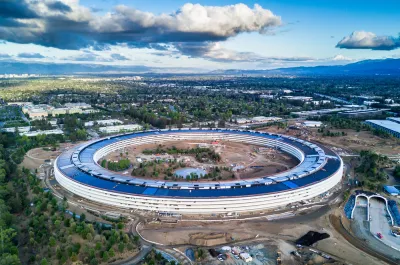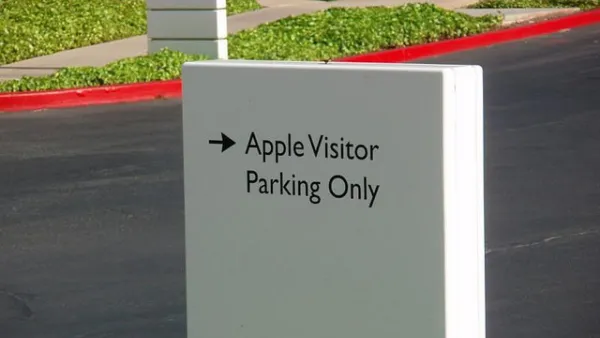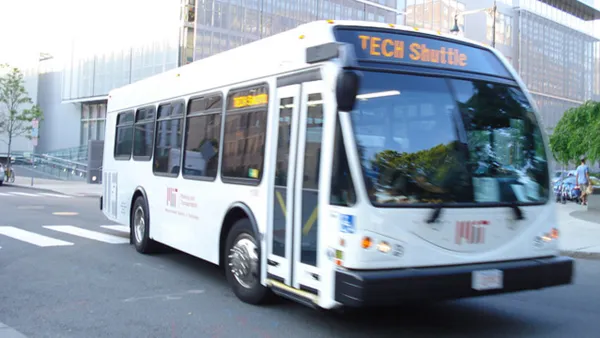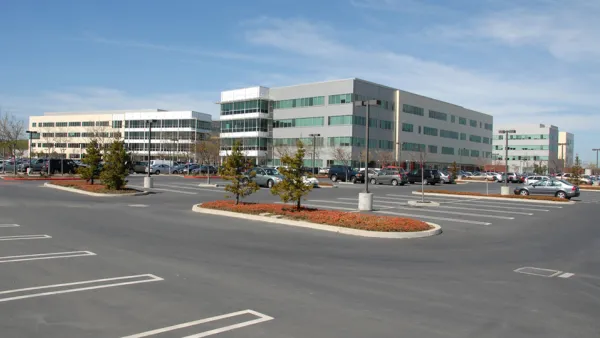Apple's new campus contains thousands of parking spaces, but neither transit options nor daycare.

Apple anticipates only about 10 percent of the employees that will work in its new headquarters will live in Cupertino, the city where Apple's headquarters was built. This is an old fashioned approach to building an office campus. "By moving out of downtown skyscrapers and building in the suburbs, corporations were reflecting 1950s ideas about cities—they were dirty, crowded, and unpleasantly diverse," Adam Rogers argues in Wired.
The location and purpose-built nature of the building make it unsuited to evolve. "If Apple ever goes out of business, what would happen to the building? The same thing that happened to Union Carbide’s. That’s why nobody builds these things anymore," writes Rogers. To ease the concerns of the city's mayor, Apple will contribute hundreds of thousand of dollars to Cupertino and neighboring cities in parking restitution, but urbanists had hoped they would have invested in other transit. "The company could have chipped in to double the frequency of CalTrain’s commuter rail. It could have built a transit center in Cupertino, which, unlike Mountain View and Palo Alto, has none."
FULL STORY: IF YOU CARE ABOUT CITIES, APPLE'S NEW CAMPUS SUCKS

National Parks Layoffs Will Cause Communities to Lose Billions
Thousands of essential park workers were laid off this week, just before the busy spring break season.

Retro-silient?: America’s First “Eco-burb,” The Woodlands Turns 50
A master-planned community north of Houston offers lessons on green infrastructure and resilient design, but falls short of its founder’s lofty affordability and walkability goals.

Delivering for America Plan Will Downgrade Mail Service in at Least 49.5 Percent of Zip Codes
Republican and Democrat lawmakers criticize the plan for its disproportionate negative impact on rural communities.

Test News Post 1
This is a summary

Test News Headline 46
Test for the image on the front page.

Balancing Bombs and Butterflies: How the National Guard Protects a Rare Species
The National Guard at Fort Indiantown Gap uses GIS technology and land management strategies to balance military training with conservation efforts, ensuring the survival of the rare eastern regal fritillary butterfly.
Urban Design for Planners 1: Software Tools
This six-course series explores essential urban design concepts using open source software and equips planners with the tools they need to participate fully in the urban design process.
Planning for Universal Design
Learn the tools for implementing Universal Design in planning regulations.
EMC Planning Group, Inc.
Planetizen
Planetizen
Mpact (formerly Rail~Volution)
Great Falls Development Authority, Inc.
HUDs Office of Policy Development and Research
NYU Wagner Graduate School of Public Service





























